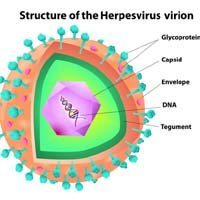Unlocking Mesothelioma’s Secrets: Understanding the Tumor Microenvironment

Researchers are working hard to understand the area around mesothelioma tumors. This is known as the tumor microenvironment. The tumor microenvironment affects mesothelioma growth and development.
Decoding the Tumor Microenvironment
Malignant mesothelioma is a serious type of cancer that affects the lining of the lungs, heart, and abdomen. It is caused by asbestos exposure. Scientists are always looking for new ways to understand and treat this disease. One important aspect they’re exploring is how the environment around the tumor, known as the tumor microenvironment. This area affects its growth and development.
In a new study, scientists from Wenzhou Medical University in China used advanced computer programs, called machine learning methods. They studied 87 cases of malignant mesothelioma. They collected a lot of information about each case, including data about the tumor’s genes, how it behaves, and the patient’s health.
The scientists wanted to understand how the tumor microenvironment might tell doctors something about how a patient will respond to treatment. The tumor microenvironment includes things like blood vessels, immune cells, and signaling molecules found around and within the tumor.
Beyond the Tumor
The scientists divided the cases into two groups based on something called stromal scores. This helped them understand how the environment around the tumor influenced the patient’s chances of survival.
Next, they looked at the genes inside the tumors to see if there were any important changes. They discovered two genes, called von Willebrand factor (VWF) and FCRL3, that were especially interesting. These genes seemed to play a role in how the tumors grew.
To learn more, the scientists looked at how VWF was linked to the immune system, which helps the body fight off diseases. They found that higher levels of VWF were connected to certain types of immune cells, which could give clues about how the body was reacting to the cancer.
The researchers found that the group with higher stromal scores had a different survival time compared to the group with lower scores. This means that the environment around the tumor really does matter for the patient’s outcome.
They also learned that having a lot of VWF could be a sign that the cancer might be more aggressive. This is important because it helps doctors understand which treatments might work best for each patient.
The scientists for this study are hopeful that their research can help doctors make better treatment decisions for their patients. They say that more clinical trials and observations are needed to learn more about the tumor microenvironment in mesothelioma patients.
Source
Weng J, Chen J. Comprehensive bioinformatics analysis of the role of VWF in the tumor microenvironment of malignant mesothelioma. Medicine (Baltimore). 2023;102(41):e35579. doi:10.1097/MD.0000000000035579. https://www.ncbi.nlm.nih.gov/pmc/articles/PMC10578691/





